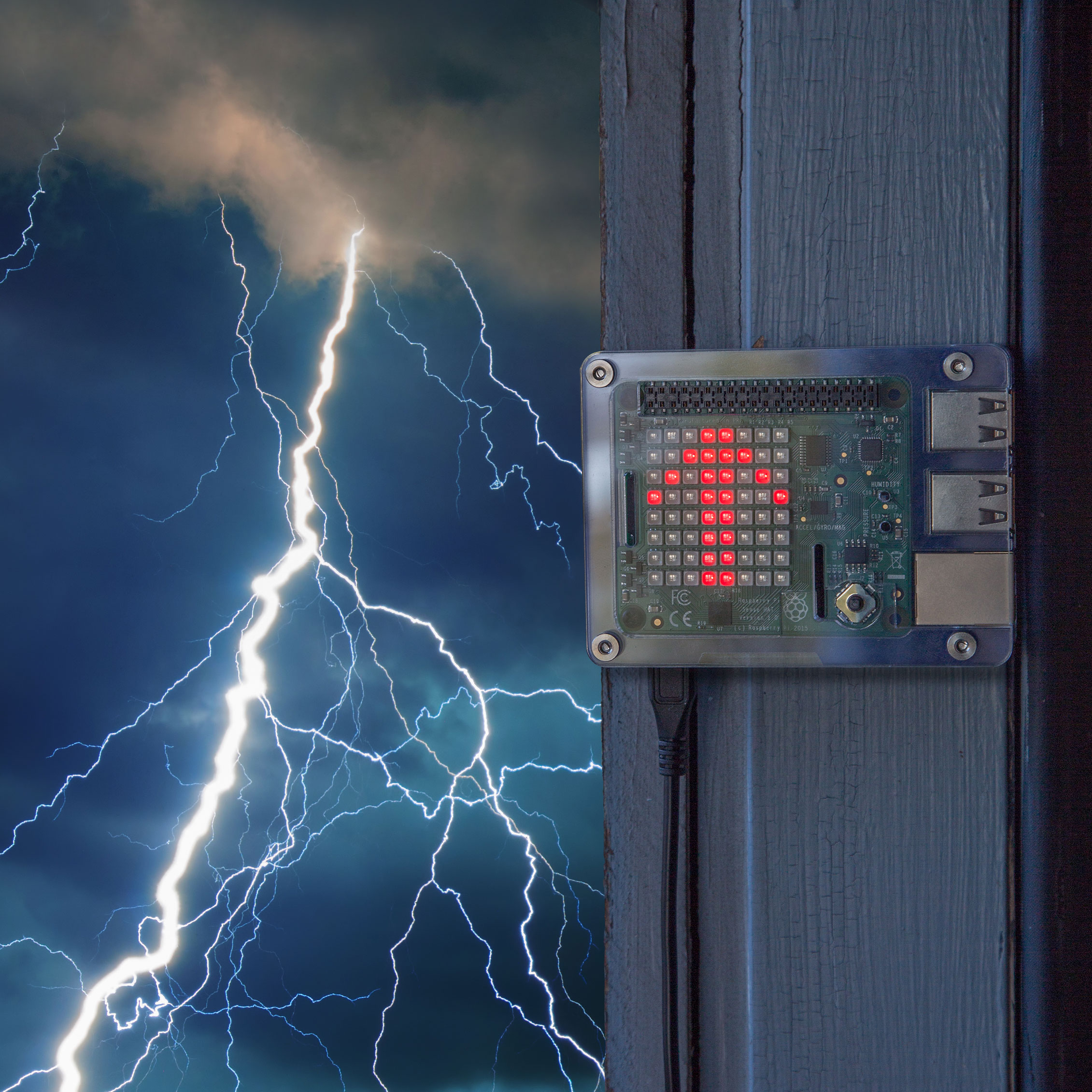
For years I’ve wanted to set up a weather station in my backyard, but I’ve balked at the cost of those expensive kits. When the folks at Astro Pi released the Sense HAT sensor board for the Raspberry Pi computer, I knew I had an easy way to build my own Pi-based weather station using off-the-shelf parts.
The Sense HAT was designed to be sent into space, and schoolchildren in England were engaged to create (and code, of course) experiments for it that would be executed by an astronaut on the International Space Station. The HAT stacks right on top of the Raspberry Pi computer and has the following hardware capabilities:
- Temperature, humidity, and pressure sensors
- Accelerator, gyroscope, and magnetometer
- 8×8 full-color RGB LED display
- 5-button joystick
For this project, I use the Sense HAT to measure temperature, humidity, and barometric pressure. Once I started collecting the data, I needed to do something with it, so I coded the application to upload the measurements to Weather Underground, creating my own online weather station. Weather Underground (WU) lets you set up your own station and upload your data for others to use; your data becomes part of the aggregate weather data, and you (and your neighbors) can view your station’s data separately as well.
Since the HAT also has an LED display, I decided to use it to display information about the weather data. You could use it to display numbers (1 or 2 digits at a time), but I decided to display a red arrow pointing up when the temperature increased over the last reading, a blue arrow pointing down when the temperature decreased, and blue and red bars (like a strange equal sign) when the temperature stays the same between measurements.
The project’s really easy to complete. Just assemble the hardware (which takes about 5 minutes), install some Python libraries, download and configure the project’s code, and you’re all set. Overall, the whole project should take you no more than an hour. The complete source code is available on Github.
You’ll also want to mount the project in a container that protects it from the elements while at the same time enabling the HAT’s sensors to accurately measure current conditions. I’m going to use mine on my covered back porch, but I also improvised a rain shield for exposed locations.




